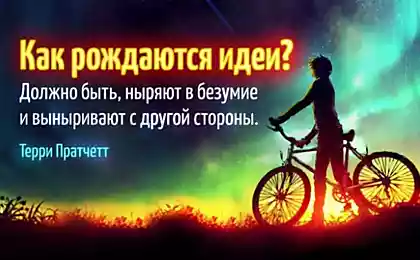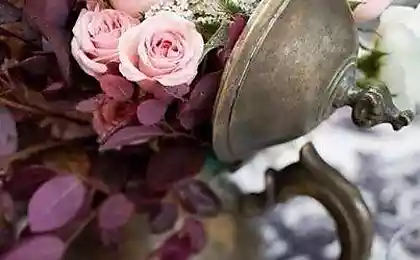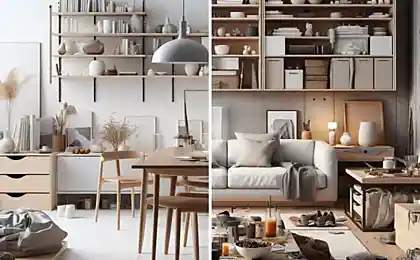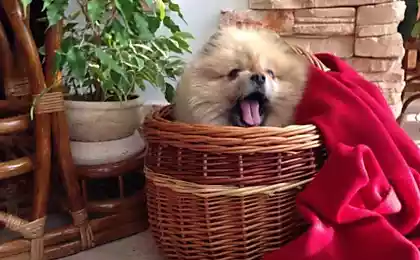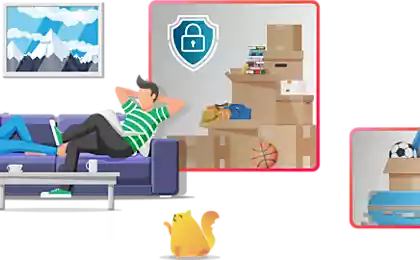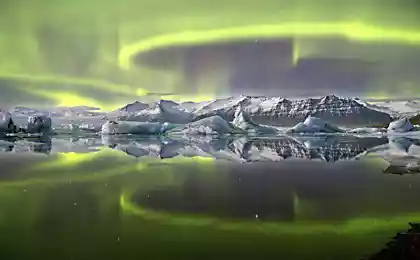378
10 strange things sent into space
Exactly the minute we started sending people into space, allowed and unauthorized paraphernalia went with them into the airless space. And without humans, unmanned spacecraft began to carry strange things to distant corners of our solar system.
Toys
Since 1985, when the space shuttle Discovery launched 11 toys into space, they have been regularly seen outside the Earth. Typically, they were part of an educational program where astronauts or astronauts filmed videos of toys, demonstrating their behavior in microgravity. STS-54 (1993) carried 40 toys into space, while STS-77 (1996) carried 10. Sixteen more toys and sports-related items were sent to the International Space Station for testing, and videos of them became part of the International Toys in Space program.
And under the STEM (Science, Technology, Engineering and Mathematics) program, astronaut Buzz Lighter from Pixar made a trip aboard the STS-124 mission to the ISS. The 30.5-centimeter figure of the animated character spent 458 days in Earth orbit.
When Buzz returned to Earth on Sept. 11, 2009, he received a ceremonial tape at Disneyland at the opening of the Toy Story Mania! attraction in the park. He was then taken to the Smithsonian and installed there.
Firearms
Since 1986, all Soviet and Russian space missions have been equipped with a three-barreled TP-82 pistol. He could fire bullets or flares. It could also be used as a machete. Why? Against whom should it be applied? Definitely not against aliens. Remember the catastrophic mission "Sunrise-2"? After there were fears that cosmonauts could find themselves among Siberian wolves or barges, they were given pistols.
In March 1965, Alexey Leonov became the first person to go into space, directly into a vacuum outside a spacecraft. His suit swelled to the point that his feet slipped out of his shoes and his hands out of his gloves. He could no longer get into the spacecraft with his hands, and he had to make his way to it literally with his head.
Things got worse when astronauts re-entered the Earth’s atmosphere. The automatic control system failed, and the astronauts had to control the descent manually. In addition, they had fuel for only one course correction. The capsule parachuted 1,500 kilometers from the intended landing site, deeply bogged down in a dense Siberian forest. At the same time, Siberian wolves and bears were the most aggressive. The astronauts had a gun, but it wasn't enough to survive a night in the Siberian forest. Fortunately, they were found four hours after landing and the next day, after skiing 9 kilometers, they were taken to a helicopter.
In 1968, a survival kit was developed for all Soviet space missions, including a Markov pistol. Markov was replaced by the TP-82 later, and in 2006 the TP-82 was replaced by a semi-automatic pistol. By the way, weapons are still part of the survival kits of Russian cosmonauts.
Pornography
When NASA sent Apollo 12 to the moon in November 1969, the backup crew played a joke with the top astronauts. After the lander landed in the Oceanus Procellarum, Charles Conrad and Alan Bean set out on the lunar surface. When they opened the spacesuit checklists attached to their wrists, they saw Playboy photo models with witty comments.
Conrad had Angela Dorian (Miss September 1967) with the caption "See Interesting Hills and Valleys?" On another page, Reagan Wilson (Miss October 1967) was featured as "Preferred partner for the ligament [the cable]." Bean had Cynthia Myers (Miss December 1968) and the inscription "Don't forget to describe the bulges [prominences]." Another page was Leslie Biancini (Miss January 1969) and "Study Her Activity."
Back in the command module, Richard Gordon found Dede Lindh (Miss August 1967) on his locker with the inscription "Map of the celestial body."
Luke's laser sword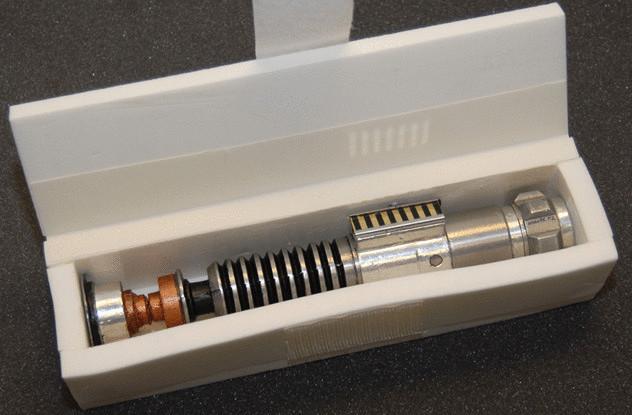
Some of the attributes were put into orbit just so you could tell they were in space. During the shuttle program, each mission was accompanied by an official list of things (OFK) that were taken into flight and according to which things were stowed. Often things were chosen so that they could be given as gifts.
For example, when the Space Shuttle Discovery launched in October 2007 on a two-week mission to the ISS, it carried 102 items on the OFK list. Seventy-six of these items belonged to crew members. Each crew member was entitled to carry 1 kilogram of paraphernalia to OFK.
Flight commander Pam Melroy took the banners from her nephew's school and her college alma mater. Mission specialist Doug Wheeler, who had been friends with Bobby Mercer since childhood and was later diagnosed with a brain tumor, took Mercer’s baseball cards to hand over to Mercer as a gift.
Some crew members took souvenirs to thank the organizations that helped them get a seat on the shuttle. Fabrics, flags, medallions, pins, photographs and posters were handed out immediately after the flight. NASA and its contractors also “consecrated” space scarves, pins, bookmarks, banners and even the Constitution of Italy.
The STS-120 list included a laser sword used by Luke Skywalker in Return of the Jedi. George Lucas asked to take him into space to celebrate the 30th anniversary of Star Wars: A New Hope.
The laser sword lay in a polystyrene foam box all the time. Almost all items from the OFK list remained in storage during missions.
Little change from purse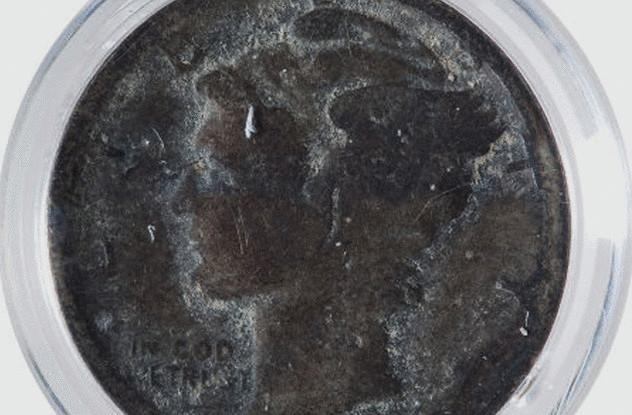
Coins may seem too common to have serious value, but consider: why do astronauts need them? To pay for a toilet on the moon or to buy a chocolate bar in a vending machine in orbit?
Getting things into space to raise their value began long before the shuttle program. Gus Grissom began doing this in July 1961, when he became the second American to travel in space. Grissom's 15-minute suborbital flight ended in a fall into the Atlantic Ocean. While he was waiting for a helicopter from Randolph Air Force Base, the Liberty Bell 7 hatch opened and water began to fill the capsule. Grissom swam out the hatch.
As soon as he came to the surface, Grissom realized that he had two bags of 50-cent coins, 30 one-dollar pieces of paper, several Liberty Bell 7 models and several other things in his pocket on his left leg. These were all souvenirs that Grissom planned to distribute after the flight. The extra weight was dragging him down. Fortunately, the helicopter arrived on time.
The capsule, however, sank, and with it the vault with old coins of 1935-1945, which Grissom also planned to give. When the Liberty Bell 7 was delivered from a depth of 5,000 meters in 1999, 52 old coins were saved. One of them is in the photo above.
Product advertising
Spaceflight has had a long and difficult relationship with advertising. NASA gave Life magazine exclusive access to Mercury 7 astronauts and their wives. Life has published a number of articles and even several books describing the lives of astronauts and their wives as middle-class Americans. In exchange, the magazine gave astronauts huge life insurance policies.
When Apollo 11 landed on the moon in July 1969, 94% of American televisions broadcast the event. The advertising space was so huge that no company could refuse. Every contractor who couldn't send anything with Apollo 11 designed detailed press releases with the flight logo flaunting on the covers. Tan became a drink for astronauts and their families on Earth. The Omega watch is the watch that astronauts wear on the moon.
Coca-Cola also participated in the program, spending $250,000 to develop a can that would not splash Coca-Cola in zero gravity. The company even changed the formula of the drink to make it easier to drink because carbonated drinks are difficult to hold in the stomach under zero gravity. When Pepsi sniffed out that Coca-Cola was sending a Coke dispenser with a shuttle, Pepsi spent $14 million to develop its "space can."
Thus began the “war of cola in space”, which did not leave indifferent even officials in Congress. “Cola” suddenly became the drink of the Democrats, and “Pepsi” found fans among Republicans.
The Challenger space shuttle was launched in 1985 with four cans of each cola. The crew of five tried all the drinks and hated both brands. But that didn't stop Pepsi from launching its media machine, calling its product "one giant gulp for humanity" (remember, "one giant step for humanity" - the words of the first man on the moon).
If you think that Russia did not take part in this mix, you are mistaken. In 2000, Pizza Hut launched a campaign to make the company more modern and international. That same year, she sponsored the Russian space agency and placed a 9-meter logo aboard the Proton unmanned rocket that delivered the Zvezda module to the ISS. The following year, she went even further, delivering a 15-centimeter pizza with salami and cheese to the ISS crew. Salami was taken because pepperoni became mold in space when Pizza Hut tested its filling. Astronaut Yuri Usachev warmed up a pizza in a microwave and played with it in zero gravity before eating it. He liked it.
A letter in a bottle sent to the cosmic ocean
When New Horizons completes its five-month study of Pluto in 2015, it will be the fifth man-made object to leave our solar system. In different places to its body are attached containers with disks with photos of the project “New horizons”, Maryland and Florida (states where built and launched the probe, respectively), as well as an American postage stamp with the image of Pluto. A piece of metal from Spaceship One, the first private manned spacecraft, also went with the probe. The small bowl-shaped container also carried the ashes of Clyde Tombaugh, the man who discovered Pluto in 1930. In addition, another CD-ROM with the signatures of 400,000 people flew, a kind of greeting to the stars.
Four other spacecraft have ventured beyond our solar system, and all four have carried greetings to aliens. Before launching Pioneer 10 in 1972 to Jupiter and beyond, Carl Sagan designed and attached an aluminum plate coated with anodized gold. On the plate was a visual message to anyone who might meet Pioneer 10, drawn by Sagan's wife Linda, telling who sent the craft, when and where his journey began.
The key to the message is two circles in the left corner of the plate depicting hydrogen, the most abundant element in the universe. The line between them is an electronic energy transition, a spectral line. In hydrogen, this spectral line has a set wavelength (21 centimeters) and frequency (1420 MHz).
When used at a given wavelength, the plate gives the average height of a person, the distance to the Sun from the center of the Milky Way, from the Sun to every planet in our Solar System, and from the Sun to 14 interstellar pulsars. All of this reveals our location. And since both our Sun and pulsars are moving at a constant speed, aliens can calculate when the Pioneer was launched. The same plate was attached to Pioneer 11. In his biography, James Van Allen - who found the Van Allen radiation belt - noted that he left his fingerprints on the Pioneer 10 plate.
Five years later, as Voyagers one and two set out on a tour of the outer solar system, Sagan created an even more ambitious interstellar message. It was brought out on a 12-inch copper gilded disc, and Sagan himself claimed that it was a kind of message in a bottle, launched into the “cosmic ocean”, which should tell the aliens the history of mankind.
The recording contains 115 images, natural sounds, musical compositions, a message from President Jimmy Carter and greetings in 55 human languages.
Top secret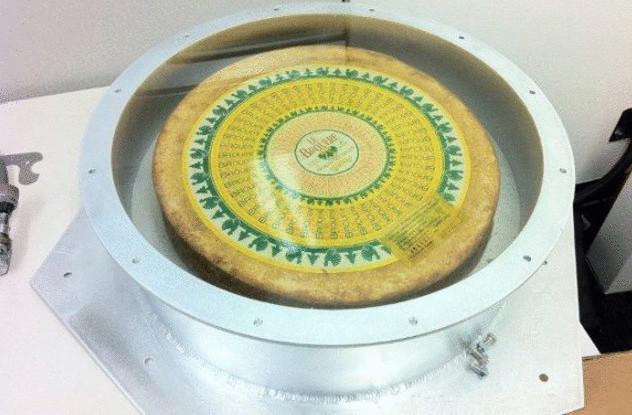
In December 2010, the California company SpaceX launched its unmanned spacecraft Dragon. The capsule orbited Earth twice and then landed safely 804 kilometers from Mexico in the Pacific Ocean, becoming the first commercial spacecraft to successfully do so. It was a test launch of Dragon before SpaceX began 12 scheduled flights to the International Space Station.
The only cargo of the test flight was hidden in a drum screwed to the floor, with the words "Top Secret" and a spotted cow in galoshes printed on the lid. This is a reference to the 1984 comedy Top Secret. Of course, there were a lot of rumors about what might have been inside, and when Dragon kicked off, SpaceX CEO Elon Musk hinted, "If you like Monty Python, you'll like the secret." Many thought it was a reference to "Spamalot" from Monty Python and the Holy Grail.
After Dragon successfully splashed down, SpaceX released photos of a large circle of Gruyer cheese located inside the drum. It was a hint of a Python parody in which John Cleese tries to order cheese from a cheese shop that doesn't have cheese. Musk later said he bought cheese in Beverly Hills on his own, trying to find the biggest circle he could.
Chairs, hamburgers, beer, bacon
For $60, you can buy a 60-gram balloon that can lift 800 grams of payload to a height of 32,000 meters or a 2.3-kilogram cargo to a height of 26,000 meters. The boundary between the atmosphere and space — the so-called Karman line — is 100,000 meters away, and near-space begins at an altitude of 23,000 meters.
In July 2012, students sent petunias in a vase into the stratosphere, where the flowers froze to a temperature of -61 degrees Celsius. Others used balloons for artistic reasons. Azuma Makoto, a Japanese artist, sent a bonsai tree and floral composition into near-space and filmed them for the Exobiotica project.
Others put things in the sky for publicity. Two friends contacted Ahneuser-Busch to figure out how to make the first beer in space. The company agreed to help, as a result, an interesting video appeared. Toshiba attached two of its high-resolution cameras to a chair and sent them on a 30,000-meter helium balloon for publicity.
Others just do it for fun. Five Harvard students waxed a two-day burger and sent it into the stratosphere. When he returned to Earth, he was not edible. The bacon raised by members of a British cricket club was cooked and eaten.
dust
Celestis Memorial Spaceflights send the ashes of loved ones into space, along with a commercial or scientific satellite mission. The remains are sealed in a container and placed on the Celestis spacecraft, which is then attached to the main rocket. Families gather to watch the launch and receive a DVD.
The first launch took place in April 1997 and orbited the ashes of Star Trek creator Gene Roddenberry and psychedelic apologist Timothy Leary.
Eugene Shoemaker was a pioneer of astrogeology and was to become one of the first geologists to go to the moon under the Apollo program. But when he was diagnosed with Addison's disease, his dreams of going to the moon were dashed. After his death in 1997, Celestis sent a geologist to the moon; the spacecraft crashed near the moon’s south pole in 1999. The impact crater became a monument to him.
James Doohan (Scottie of the original Star Trek) and Gordon Cooper (one of the Mercury 7 astronauts) were also sent into space. Since 2015, Celestis plans to send the ashes of pets into space. The shipping cost starts from $12,000.
Source: hi-news.ru
Toys
Since 1985, when the space shuttle Discovery launched 11 toys into space, they have been regularly seen outside the Earth. Typically, they were part of an educational program where astronauts or astronauts filmed videos of toys, demonstrating their behavior in microgravity. STS-54 (1993) carried 40 toys into space, while STS-77 (1996) carried 10. Sixteen more toys and sports-related items were sent to the International Space Station for testing, and videos of them became part of the International Toys in Space program.
And under the STEM (Science, Technology, Engineering and Mathematics) program, astronaut Buzz Lighter from Pixar made a trip aboard the STS-124 mission to the ISS. The 30.5-centimeter figure of the animated character spent 458 days in Earth orbit.
When Buzz returned to Earth on Sept. 11, 2009, he received a ceremonial tape at Disneyland at the opening of the Toy Story Mania! attraction in the park. He was then taken to the Smithsonian and installed there.
Firearms
Since 1986, all Soviet and Russian space missions have been equipped with a three-barreled TP-82 pistol. He could fire bullets or flares. It could also be used as a machete. Why? Against whom should it be applied? Definitely not against aliens. Remember the catastrophic mission "Sunrise-2"? After there were fears that cosmonauts could find themselves among Siberian wolves or barges, they were given pistols.
In March 1965, Alexey Leonov became the first person to go into space, directly into a vacuum outside a spacecraft. His suit swelled to the point that his feet slipped out of his shoes and his hands out of his gloves. He could no longer get into the spacecraft with his hands, and he had to make his way to it literally with his head.
Things got worse when astronauts re-entered the Earth’s atmosphere. The automatic control system failed, and the astronauts had to control the descent manually. In addition, they had fuel for only one course correction. The capsule parachuted 1,500 kilometers from the intended landing site, deeply bogged down in a dense Siberian forest. At the same time, Siberian wolves and bears were the most aggressive. The astronauts had a gun, but it wasn't enough to survive a night in the Siberian forest. Fortunately, they were found four hours after landing and the next day, after skiing 9 kilometers, they were taken to a helicopter.
In 1968, a survival kit was developed for all Soviet space missions, including a Markov pistol. Markov was replaced by the TP-82 later, and in 2006 the TP-82 was replaced by a semi-automatic pistol. By the way, weapons are still part of the survival kits of Russian cosmonauts.
Pornography

When NASA sent Apollo 12 to the moon in November 1969, the backup crew played a joke with the top astronauts. After the lander landed in the Oceanus Procellarum, Charles Conrad and Alan Bean set out on the lunar surface. When they opened the spacesuit checklists attached to their wrists, they saw Playboy photo models with witty comments.
Conrad had Angela Dorian (Miss September 1967) with the caption "See Interesting Hills and Valleys?" On another page, Reagan Wilson (Miss October 1967) was featured as "Preferred partner for the ligament [the cable]." Bean had Cynthia Myers (Miss December 1968) and the inscription "Don't forget to describe the bulges [prominences]." Another page was Leslie Biancini (Miss January 1969) and "Study Her Activity."
Back in the command module, Richard Gordon found Dede Lindh (Miss August 1967) on his locker with the inscription "Map of the celestial body."
Luke's laser sword

Some of the attributes were put into orbit just so you could tell they were in space. During the shuttle program, each mission was accompanied by an official list of things (OFK) that were taken into flight and according to which things were stowed. Often things were chosen so that they could be given as gifts.
For example, when the Space Shuttle Discovery launched in October 2007 on a two-week mission to the ISS, it carried 102 items on the OFK list. Seventy-six of these items belonged to crew members. Each crew member was entitled to carry 1 kilogram of paraphernalia to OFK.
Flight commander Pam Melroy took the banners from her nephew's school and her college alma mater. Mission specialist Doug Wheeler, who had been friends with Bobby Mercer since childhood and was later diagnosed with a brain tumor, took Mercer’s baseball cards to hand over to Mercer as a gift.
Some crew members took souvenirs to thank the organizations that helped them get a seat on the shuttle. Fabrics, flags, medallions, pins, photographs and posters were handed out immediately after the flight. NASA and its contractors also “consecrated” space scarves, pins, bookmarks, banners and even the Constitution of Italy.
The STS-120 list included a laser sword used by Luke Skywalker in Return of the Jedi. George Lucas asked to take him into space to celebrate the 30th anniversary of Star Wars: A New Hope.
The laser sword lay in a polystyrene foam box all the time. Almost all items from the OFK list remained in storage during missions.
Little change from purse

Coins may seem too common to have serious value, but consider: why do astronauts need them? To pay for a toilet on the moon or to buy a chocolate bar in a vending machine in orbit?
Getting things into space to raise their value began long before the shuttle program. Gus Grissom began doing this in July 1961, when he became the second American to travel in space. Grissom's 15-minute suborbital flight ended in a fall into the Atlantic Ocean. While he was waiting for a helicopter from Randolph Air Force Base, the Liberty Bell 7 hatch opened and water began to fill the capsule. Grissom swam out the hatch.
As soon as he came to the surface, Grissom realized that he had two bags of 50-cent coins, 30 one-dollar pieces of paper, several Liberty Bell 7 models and several other things in his pocket on his left leg. These were all souvenirs that Grissom planned to distribute after the flight. The extra weight was dragging him down. Fortunately, the helicopter arrived on time.
The capsule, however, sank, and with it the vault with old coins of 1935-1945, which Grissom also planned to give. When the Liberty Bell 7 was delivered from a depth of 5,000 meters in 1999, 52 old coins were saved. One of them is in the photo above.
Product advertising

Spaceflight has had a long and difficult relationship with advertising. NASA gave Life magazine exclusive access to Mercury 7 astronauts and their wives. Life has published a number of articles and even several books describing the lives of astronauts and their wives as middle-class Americans. In exchange, the magazine gave astronauts huge life insurance policies.
When Apollo 11 landed on the moon in July 1969, 94% of American televisions broadcast the event. The advertising space was so huge that no company could refuse. Every contractor who couldn't send anything with Apollo 11 designed detailed press releases with the flight logo flaunting on the covers. Tan became a drink for astronauts and their families on Earth. The Omega watch is the watch that astronauts wear on the moon.
Coca-Cola also participated in the program, spending $250,000 to develop a can that would not splash Coca-Cola in zero gravity. The company even changed the formula of the drink to make it easier to drink because carbonated drinks are difficult to hold in the stomach under zero gravity. When Pepsi sniffed out that Coca-Cola was sending a Coke dispenser with a shuttle, Pepsi spent $14 million to develop its "space can."
Thus began the “war of cola in space”, which did not leave indifferent even officials in Congress. “Cola” suddenly became the drink of the Democrats, and “Pepsi” found fans among Republicans.
The Challenger space shuttle was launched in 1985 with four cans of each cola. The crew of five tried all the drinks and hated both brands. But that didn't stop Pepsi from launching its media machine, calling its product "one giant gulp for humanity" (remember, "one giant step for humanity" - the words of the first man on the moon).
If you think that Russia did not take part in this mix, you are mistaken. In 2000, Pizza Hut launched a campaign to make the company more modern and international. That same year, she sponsored the Russian space agency and placed a 9-meter logo aboard the Proton unmanned rocket that delivered the Zvezda module to the ISS. The following year, she went even further, delivering a 15-centimeter pizza with salami and cheese to the ISS crew. Salami was taken because pepperoni became mold in space when Pizza Hut tested its filling. Astronaut Yuri Usachev warmed up a pizza in a microwave and played with it in zero gravity before eating it. He liked it.
A letter in a bottle sent to the cosmic ocean

When New Horizons completes its five-month study of Pluto in 2015, it will be the fifth man-made object to leave our solar system. In different places to its body are attached containers with disks with photos of the project “New horizons”, Maryland and Florida (states where built and launched the probe, respectively), as well as an American postage stamp with the image of Pluto. A piece of metal from Spaceship One, the first private manned spacecraft, also went with the probe. The small bowl-shaped container also carried the ashes of Clyde Tombaugh, the man who discovered Pluto in 1930. In addition, another CD-ROM with the signatures of 400,000 people flew, a kind of greeting to the stars.
Four other spacecraft have ventured beyond our solar system, and all four have carried greetings to aliens. Before launching Pioneer 10 in 1972 to Jupiter and beyond, Carl Sagan designed and attached an aluminum plate coated with anodized gold. On the plate was a visual message to anyone who might meet Pioneer 10, drawn by Sagan's wife Linda, telling who sent the craft, when and where his journey began.
The key to the message is two circles in the left corner of the plate depicting hydrogen, the most abundant element in the universe. The line between them is an electronic energy transition, a spectral line. In hydrogen, this spectral line has a set wavelength (21 centimeters) and frequency (1420 MHz).
When used at a given wavelength, the plate gives the average height of a person, the distance to the Sun from the center of the Milky Way, from the Sun to every planet in our Solar System, and from the Sun to 14 interstellar pulsars. All of this reveals our location. And since both our Sun and pulsars are moving at a constant speed, aliens can calculate when the Pioneer was launched. The same plate was attached to Pioneer 11. In his biography, James Van Allen - who found the Van Allen radiation belt - noted that he left his fingerprints on the Pioneer 10 plate.
Five years later, as Voyagers one and two set out on a tour of the outer solar system, Sagan created an even more ambitious interstellar message. It was brought out on a 12-inch copper gilded disc, and Sagan himself claimed that it was a kind of message in a bottle, launched into the “cosmic ocean”, which should tell the aliens the history of mankind.
The recording contains 115 images, natural sounds, musical compositions, a message from President Jimmy Carter and greetings in 55 human languages.
Top secret

In December 2010, the California company SpaceX launched its unmanned spacecraft Dragon. The capsule orbited Earth twice and then landed safely 804 kilometers from Mexico in the Pacific Ocean, becoming the first commercial spacecraft to successfully do so. It was a test launch of Dragon before SpaceX began 12 scheduled flights to the International Space Station.
The only cargo of the test flight was hidden in a drum screwed to the floor, with the words "Top Secret" and a spotted cow in galoshes printed on the lid. This is a reference to the 1984 comedy Top Secret. Of course, there were a lot of rumors about what might have been inside, and when Dragon kicked off, SpaceX CEO Elon Musk hinted, "If you like Monty Python, you'll like the secret." Many thought it was a reference to "Spamalot" from Monty Python and the Holy Grail.
After Dragon successfully splashed down, SpaceX released photos of a large circle of Gruyer cheese located inside the drum. It was a hint of a Python parody in which John Cleese tries to order cheese from a cheese shop that doesn't have cheese. Musk later said he bought cheese in Beverly Hills on his own, trying to find the biggest circle he could.
Chairs, hamburgers, beer, bacon
For $60, you can buy a 60-gram balloon that can lift 800 grams of payload to a height of 32,000 meters or a 2.3-kilogram cargo to a height of 26,000 meters. The boundary between the atmosphere and space — the so-called Karman line — is 100,000 meters away, and near-space begins at an altitude of 23,000 meters.
In July 2012, students sent petunias in a vase into the stratosphere, where the flowers froze to a temperature of -61 degrees Celsius. Others used balloons for artistic reasons. Azuma Makoto, a Japanese artist, sent a bonsai tree and floral composition into near-space and filmed them for the Exobiotica project.
Others put things in the sky for publicity. Two friends contacted Ahneuser-Busch to figure out how to make the first beer in space. The company agreed to help, as a result, an interesting video appeared. Toshiba attached two of its high-resolution cameras to a chair and sent them on a 30,000-meter helium balloon for publicity.
Others just do it for fun. Five Harvard students waxed a two-day burger and sent it into the stratosphere. When he returned to Earth, he was not edible. The bacon raised by members of a British cricket club was cooked and eaten.
dust
Celestis Memorial Spaceflights send the ashes of loved ones into space, along with a commercial or scientific satellite mission. The remains are sealed in a container and placed on the Celestis spacecraft, which is then attached to the main rocket. Families gather to watch the launch and receive a DVD.
The first launch took place in April 1997 and orbited the ashes of Star Trek creator Gene Roddenberry and psychedelic apologist Timothy Leary.
Eugene Shoemaker was a pioneer of astrogeology and was to become one of the first geologists to go to the moon under the Apollo program. But when he was diagnosed with Addison's disease, his dreams of going to the moon were dashed. After his death in 1997, Celestis sent a geologist to the moon; the spacecraft crashed near the moon’s south pole in 1999. The impact crater became a monument to him.
James Doohan (Scottie of the original Star Trek) and Gordon Cooper (one of the Mercury 7 astronauts) were also sent into space. Since 2015, Celestis plans to send the ashes of pets into space. The shipping cost starts from $12,000.
Source: hi-news.ru
Archaeologists have discovered an ancient farm right in the center of Israel
Scientists have learned to identify the authors of anonymous videos

